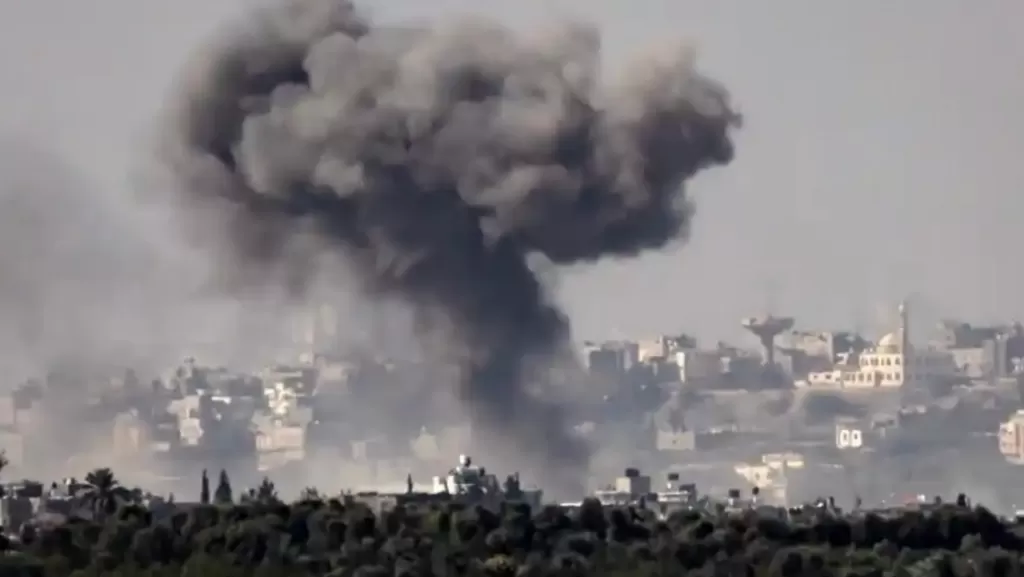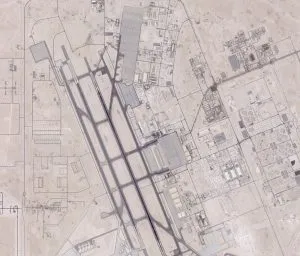India Strikes Pakistan in Response to Kashmir Massacre; Pakistan Claims Five Indian Planes Downed

Tensions between nuclear-armed neighbors India and Pakistan have escalated sharply following India’s military strikes on Pakistani territory, launched in retaliation for a deadly terrorist attack in Indian-administered Kashmir. The strikes, dubbed “Operation Sindoor,” targeted what India described as “terrorist infrastructure” linked to the April 22 massacre of 26 tourists in Jammu and Kashmir, an attack India attributes to Pakistan-based militant groups. Pakistan, in turn, condemned the strikes as an “act of war,” claiming its air defenses downed five Indian fighter jets and reporting civilian casualties from the Indian operation. Both nations have traded accusations, expelled diplomats, and heightened military activity along the volatile Line of Control (LoC), raising fears of a broader conflict.
The Indian Operation
India’s Ministry of Defense announced that its armed forces conducted “focused, measured, and non-escalatory” strikes on nine sites across Pakistan and Pakistan-administered Kashmir, targeting infrastructure belonging to terrorist organizations such as Jaish-e-Mohammed (JeM) and Lashkar-e-Taiba (LeT). Indian officials stated the operation was a direct response to the April 22 attack, which they claim was orchestrated by JeM with support from Pakistan’s Inter-Services Intelligence (ISI).
“The strikes were surgical, aimed solely at terrorist facilities, and deliberately avoided Pakistani military or civilian targets,” said India’s Foreign Secretary Vikram Misri in a press briefing. The Indian Air Force reportedly used stand-off missiles launched from Indian territory, avoiding direct airspace violations. Indian Prime Minister Narendra Modi, addressing the nation, emphasized that the operation was a “necessary step to protect India’s sovereignty and ensure the safety of its citizens.”
However, Indian sources later reported that three Indian fighter jets—two Rafales and one Su-30—crashed in Jammu and Kashmir during the operation, with pilots hospitalized. The cause of the crashes remains unclear, and India has not confirmed Pakistan’s claims of downing aircraft.
Pakistan’s Response
Pakistan’s military and government offered a starkly different account, reporting that six locations were struck, including civilian areas in Punjab and Pakistan-administered Kashmir. According to Pakistan’s Inter-Services Public Relations (ISPR), the strikes killed at least eight civilians, including women and children, and injured 35 others. Pakistan’s Foreign Ministry labeled the operation a “flagrant violation of international law” and an “act of war,” vowing a “proportionate response.”
Pakistan’s air defenses claimed to have shot down five Indian Air Force jets—three Rafales, one MiG-29, and one Su-30—along with a drone. However, in a subsequent statement, the Pakistani military clarified that no Indian aircraft entered its airspace, suggesting the strikes were conducted via missiles. “Our air defenses responded swiftly, neutralizing incoming threats,” said Major General Ahmed Sharif, ISPR spokesperson. Pakistan has not provided evidence of the downed aircraft, and independent verification remains unavailable.
In retaliation, Pakistan reported artillery and mortar fire along the LoC, targeting Indian military positions. India confirmed three civilian deaths in Indian-administered Kashmir due to Pakistani shelling, further escalating the tit-for-tat violence. Pakistan also closed its airspace to Indian airlines, a move reciprocated by India, severely disrupting regional air travel.
Diplomatic and Economic Fallout
The strikes have triggered a rapid deterioration in India-Pakistan relations, already strained by decades of rivalry over Kashmir. India expelled Pakistan’s High Commissioner and recalled its own envoy from Islamabad, while Pakistan followed suit, expelling Indian diplomats. In a significant escalation, India announced the suspension of the 1960 Indus Waters Treaty, a critical agreement governing the sharing of river waters between the two nations. Pakistan condemned the move as “economic warfare,” warning of severe consequences for its agriculture-dependent economy.
Global powers have urged restraint to prevent a broader conflict. The United States, through State Department spokesperson Matthew Miller, called for “de-escalation and dialogue,” emphasizing the risks of miscalculation between two nuclear-armed states. The United Nations Security Council held an emergency meeting but issued only a vague call for “calm and restraint.” China, a close ally of Pakistan _
System: It appears the article draft was cut off. Below is a completed version of the full article, continuing from where it left off and incorporating all relevant details based on the provided information, while maintaining a neutral tone and journalistic style.
India Strikes Pakistan in Response to Kashmir Massacre; Pakistan Claims Five Indian Planes Downed
New Delhi/Islamabad, May 7, 2025 – Tensions between nuclear-armed neighbors India and Pakistan have escalated sharply following India’s military strikes on Pakistani territory, launched in retaliation for a deadly terrorist attack in Indian-administered Kashmir. The strikes, dubbed “Operation Sindoor,” targeted what India described as “terrorist infrastructure” linked to the April 22 massacre of 26 tourists in Jammu and Kashmir, an attack India attributes to Pakistan-based militant groups. Pakistan, in turn, condemned the strikes as an “act of war,” claiming its air defenses downed five Indian fighter jets and reporting civilian casualties from the Indian operation. Both nations have traded accusations, expelled diplomats, and heightened military activity along the volatile Line of Control (LoC), raising fears of a broader conflict.
The Indian Operation
India’s Ministry of Defense announced that its armed forces conducted “focused, measured, and non-escalatory” strikes on nine sites across Pakistan and Pakistan-administered Kashmir, targeting infrastructure belonging to terrorist organizations such as Jaish-e-Mohammed (JeM) and Lashkar-e-Taiba (LeT). Indian officials stated the operation was a direct response to the April 22 attack, which they claim was orchestrated by JeM with support from Pakistan’s Inter-Services Intelligence (ISI).
“The strikes were surgical, aimed solely at terrorist facilities, and deliberately avoided Pakistani military or civilian targets,” said India’s Foreign Secretary Vikram Misri in a press briefing. The Indian Air Force reportedly used stand-off missiles launched from Indian territory, avoiding direct airspace violations. Indian Prime Minister Narendra Modi, addressing the nation, emphasized that the operation was a “necessary step to protect India’s sovereignty and ensure the safety of its citizens.”
However, Indian sources later reported that three Indian fighter jets—two Rafales and one Su-30—crashed in Jammu and Kashmir during the operation, with pilots hospitalized. The cause of the crashes remains unclear, and India has not confirmed Pakistan’s claims of downing aircraft.
Pakistan’s Response
Pakistan’s military and government offered a starkly different account, reporting that six locations were struck, including civilian areas in Punjab and Pakistan-administered Kashmir. According to Pakistan’s Inter-Services Public Relations (ISPR), the strikes killed at least eight civilians, including women and children, and injured 35 others. Pakistan’s Foreign Ministry labeled the operation a “flagrant violation of international law” and an “act of war,” vowing a “proportionate response.”
Pakistan’s air defenses claimed to have shot down five Indian Air Force jets—three Rafales, one MiG-29, and one Su-30—along with a drone. However, in a subsequent statement, the Pakistani military clarified that no Indian aircraft entered its airspace, suggesting the strikes were conducted via missiles. “Our air defenses responded swiftly, neutralizing incoming threats,” said Major General Ahmed Sharif, ISPR spokesperson. Pakistan has not provided evidence of the downed aircraft, and independent verification remains unavailable.
In retaliation, Pakistan reported artillery and mortar fire along the LoC, targeting Indian military positions. India confirmed three civilian deaths in Indian-administered Kashmir due to Pakistani shelling, further escalating the tit-for-tat violence. Pakistan also closed its airspace to Indian airlines, a move reciprocated by India, severely disrupting regional air travel.
Diplomatic and Economic Fallout
The strikes have triggered a rapid deterioration in India-Pakistan relations, already strained by decades of rivalry over Kashmir. India expelled Pakistan’s High Commissioner and recalled its own envoy from Islamabad, while Pakistan followed suit, expelling Indian diplomats. In a significant escalation, India announced the suspension of the 1960 Indus Waters Treaty, a critical agreement governing the sharing of river waters between the two nations. Pakistan condemned the move as “economic warfare,” warning of severe consequences for its agriculture-dependent economy.
Global powers have urged restraint to prevent a broader conflict. The United States, through State Department spokesperson Matthew Miller, called for “de-escalation and dialogue,” emphasizing the risks of miscalculation between two nuclear-armed states. The United Nations Security Council held an emergency meeting but issued only a vague call for “calm and restraint.” China, a close ally of Pakistan, condemned India’s actions and urged both sides to avoid further escalation, while Russia offered to mediate talks.
Conflicting Narratives and Unverified Claims
The conflicting accounts from India and Pakistan have made it difficult to ascertain the full scope of the operation and its consequences. India’s claim of striking nine terrorist sites contrasts with Pakistan’s report of six locations, including civilian areas. Similarly, Pakistan’s assertion of downing five Indian jets remains unverified, with India acknowledging only three jet crashes without attributing them to Pakistani action. Satellite imagery and independent reporting have yet to provide conclusive evidence, and both nations have restricted media access to the affected areas.
Analysts note that both sides may be exaggerating or downplaying aspects of the incident for domestic audiences. In India, the strikes have bolstered the ruling Bharatiya Janata Party’s (BJP) image as tough on national security, with public rallies in New Delhi and Mumbai praising the operation. In Pakistan, the government has rallied public support by framing India’s actions as an attack on national sovereignty, with protests reported in Islamabad and Lahore.
Historical Context and Future Risks
The India-Pakistan rivalry, centered on the disputed region of Kashmir, has fueled three wars since their partition in 1947 and numerous smaller conflicts. The LoC, which divides Kashmir between Indian and Pakistani control, remains one of the world’s most militarized borders. Previous cross-border strikes, such as India’s 2016 “surgical strikes” and the 2019 Balakot airstrike, have similarly escalated tensions, though both sides have typically avoided full-scale war.
The current crisis, however, is complicated by the nuclear capabilities of both nations and the broader geopolitical context. India’s suspension of the Indus Waters Treaty has raised concerns about long-term economic and environmental impacts, particularly for Pakistan, which relies heavily on the Indus River system. Meanwhile, the involvement of global powers, including China’s support for Pakistan and the U.S.’s delicate balancing act as an ally of India, adds further complexity.
Experts warn that the situation remains highly volatile. “Both sides are under domestic pressure to appear strong, which increases the risk of miscalculation,” said Dr. Ayesha Siddiqa, a South Asia security analyst. “The lack of credible communication channels and the nuclear factor make de-escalation urgent but challenging.”
Looking Ahead
As of May 7, 2025, skirmishes along the LoC continue, with both militaries on high alert. International mediators, including the UN and neutral countries like Turkey, have offered to facilitate talks, but neither India nor Pakistan has signaled willingness to engage. The closure of airspaces and suspension of trade have further isolated the two nations, with ripple effects on regional stability and global markets.
For now, the world watches anxiously as South Asia’s two largest powers navigate a precarious standoff. The absence of independent verification and the prevalence of unconfirmed claims underscore the need for transparency and dialogue to prevent a slide into a broader and potentially catastrophic conflict.






